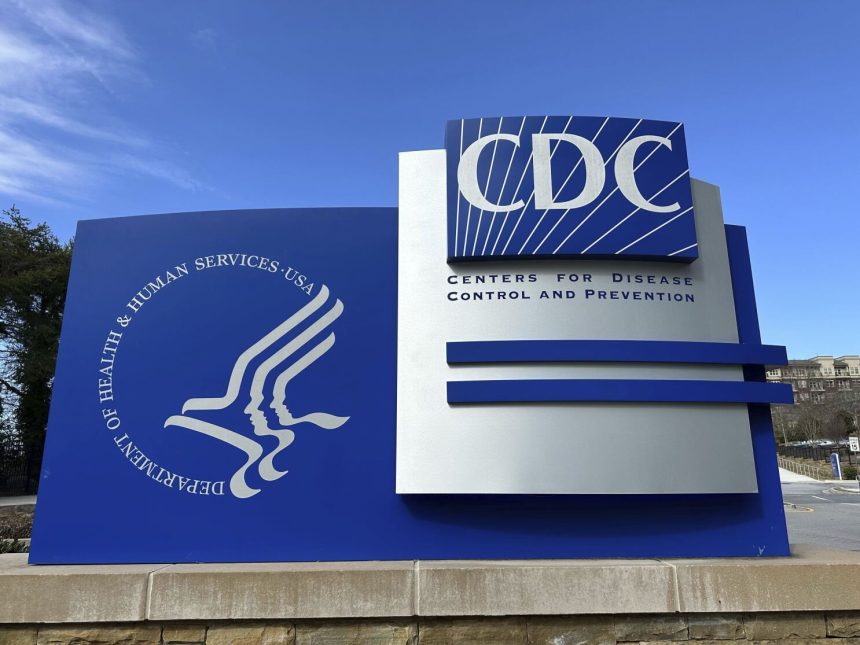Foodborne illness remains one of the most urgent public health challenges in the United States, where millions of people depend on packaged and prepared meals for their daily nutrition. Recently, the Centers for Disease Control and Prevention (CDC) announced that a salmonella outbreak has been linked to Metabolic Meals, a well-known meal delivery service that promotes itself as a healthier alternative for busy individuals. Dozens of people across multiple states have fallen ill, and at least seven have required hospitalization. This outbreak has raised serious concerns about food safety in the growing meal delivery industry, the role of regulatory oversight, and the steps consumers can take to protect themselves.
- What is Salmonella and Why It Matters
- How the CDC Connected the Outbreak to Metabolic Meals
- The Consumer Impact and Emotional Toll
- The Regulatory Gap in Meal Delivery Services
- Company Response and Consumer Demands
- Expert Opinions on Preventing Future Outbreaks
- The Economic Fallout
- What Consumers Can Do Now
- Frequently Asked Questions
- What is salmonella and how does it spread?
- How many people have been affected by the outbreak?
- What has Metabolic Meals done in response?
- Is it safe to continue ordering from Metabolic Meals?
- What precautions should consumers take with meal delivery services?
- Conclusion
For many who placed their trust in Metabolic Meals, the news has been a major shock. The company built its reputation on offering wellness-focused options, yet it now finds itself at the center of a national foodborne illness investigation. To fully understand the gravity of this situation, it is important to examine what salmonella is, how outbreaks like this are investigated, and what this incident means for consumers, the industry, and public health.
What is Salmonella and Why It Matters
Salmonella is one of the most common causes of foodborne illness in the United States. The CDC estimates that it causes about 1.35 million infections, 26,500 hospitalizations, and 420 deaths each year. It is usually contracted by consuming contaminated food or water, and is most often linked to poultry, eggs, meat, dairy products, or fresh produce.
Symptoms typically appear within a few hours to a few days after exposure and may include diarrhea, fever, stomach cramps, nausea, and vomiting. Most healthy adults recover within a week, but certain groups—such as young children, older adults, and those with weakened immune systems—face a much greater risk of severe complications. In some cases, the bacteria can move from the intestines into the bloodstream, which can be life-threatening.
The fact that this outbreak has already resulted in hospitalizations highlights how serious salmonella can be when food safety systems fail. It also raises important questions about how contamination occurred within a company marketed as a premium, health-conscious service.
How the CDC Connected the Outbreak to Metabolic Meals
Tracing the source of a foodborne illness outbreak requires careful investigation. Public health officials first began noticing clusters of patients with similar symptoms. Stool samples collected from these patients were tested and revealed the same strain of salmonella bacteria.
Epidemiologists then interviewed the sick individuals to identify common food exposures. A significant number of those interviewed reported eating meals from Metabolic Meals. Using advanced genetic sequencing, the CDC confirmed that the bacterial strain found in patients matched samples from the company’s products.
Once the connection was established, the CDC issued a public alert, warning consumers and advising them to avoid eating certain meals from the service. This step was critical in preventing further illnesses and ensuring transparency.
The Consumer Impact and Emotional Toll
For customers, the outbreak is not just about illness—it is about broken trust. Many people turned to Metabolic Meals because they wanted healthier, more reliable food options. Some were parents feeding their children, while others were health-conscious professionals relying on the service to stay on track with their wellness goals.
Stories from affected consumers paint a troubling picture. One woman described how her elderly father was hospitalized after eating a chicken dish delivered to their home. Another customer explained how she and her young child became violently ill after consuming one of the company’s prepared meals. These accounts underscore that beyond statistics, food safety failures can devastate real lives.
When a company that builds its brand on health and safety falters, the damage to public trust can be even greater than the immediate health consequences.
The Regulatory Gap in Meal Delivery Services
The outbreak has also shed light on the regulatory challenges facing the fast-growing meal delivery sector. Traditional restaurants are inspected by local health departments, while food manufacturers are monitored by agencies like the Food and Drug Administration (FDA) and the United States Department of Agriculture (USDA). However, meal delivery companies that prepare and ship ready-to-eat meals across state lines fall into a more complex category.
This patchwork oversight can create gaps where safety protocols are inconsistent. Issues such as temperature control during shipping, packaging safety, and sanitation at preparation facilities all require strict monitoring. Yet regulators often struggle to keep pace with the rapid expansion of meal delivery companies.
Experts warn that unless stronger standards are implemented, more outbreaks like this may occur in the future.
Company Response and Consumer Demands
Metabolic Meals responded to the CDC’s findings by recalling certain products and suspending operations at facilities under investigation. The company has also pledged to cooperate fully with health authorities. While these steps are necessary, they may not be enough to restore consumer confidence.
Customers want transparency about how the contamination occurred and what measures are being put in place to prevent a repeat incident. They also expect support for those affected, which could include compensation for medical expenses and clear communication about ongoing safety improvements.
Consumer advocacy groups argue that this outbreak should serve as a turning point for the industry, pushing companies to prioritize safety over speed and profit.
Expert Opinions on Preventing Future Outbreaks
Food safety experts emphasize that the Metabolic Meals outbreak is a reminder of how easily contamination can occur in modern food systems. Dr. Lisa Ramirez, a public health microbiologist, explains, “Contamination doesn’t always happen in one place. It can occur at multiple points—from farms and suppliers to preparation facilities and distribution centers. Preventing outbreaks requires strict vigilance at every step.”
Other experts stress the importance of consumer awareness. While customers cannot control what happens before food arrives at their doorstep, they can take precautions at home. Ensuring meals are refrigerated immediately upon delivery, checking packaging integrity, and practicing proper food hygiene are all simple steps that reduce risks.
The Economic Fallout
The financial consequences for Metabolic Meals are likely to be severe. Product recalls, facility shutdowns, and potential lawsuits represent immediate costs. Beyond that, the company faces long-term damage to its reputation.
The broader meal delivery industry may also feel the effects. Consumers who once viewed these services as safe and convenient alternatives may now hesitate to place orders. Competitors could face heightened scrutiny, and investors may demand stronger safety assurances before committing funds to such businesses.
What Consumers Can Do Now
While outbreaks are primarily the responsibility of food companies and regulators, consumers can still take steps to protect themselves. Practical measures include:
-
Staying updated on CDC and FDA recall notices.
-
Checking packaging for damage or improper sealing before eating.
-
Refrigerating or freezing meals immediately upon delivery.
-
Washing hands and surfaces thoroughly before handling food.
-
Reporting any suspected foodborne illness to local health departments.
Taking these precautions does not eliminate all risks but can reduce the chances of illness.
Frequently Asked Questions
What is salmonella and how does it spread?
Salmonella is a type of bacteria that causes foodborne illness. It spreads through contaminated food or water and can infect anyone, though young children, the elderly, and those with weakened immune systems are most at risk of severe illness.
How many people have been affected by the outbreak?
Dozens of people across several states have been sickened by this outbreak, and at least seven have been hospitalized, according to the CDC. Investigations are ongoing to determine the full scope.
What has Metabolic Meals done in response?
The company has recalled affected products, suspended some operations, and promised full cooperation with health authorities. Customers are waiting for more detailed updates and safety assurances.
Is it safe to continue ordering from Metabolic Meals?
Until the CDC and FDA confirm that corrective measures have been taken, consumers are advised to avoid recalled products and monitor official updates. Safety should be prioritized over convenience.
What precautions should consumers take with meal delivery services?
Consumers should refrigerate meals promptly, inspect packaging, wash hands before handling food, and stay informed about recalls. Reporting any illness linked to a delivered meal can also help prevent further outbreaks.
Conclusion
The salmonella outbreak linked to Metabolic Meals serves as a powerful reminder that no company, no matter how health-focused its branding, is immune from food safety risks. With dozens sickened and multiple hospitalizations, the incident underscores the urgent need for stricter regulations, more robust industry standards, and greater consumer awareness.
As investigations continue, the immediate priority is preventing more illnesses and supporting those already affected. For the broader public, the case highlights the importance of vigilance and transparency in the food industry. Trust, once broken, is not easily restored. This outbreak may well become a turning point for meal delivery services, forcing both companies and regulators to place food safety at the center of their operations.








